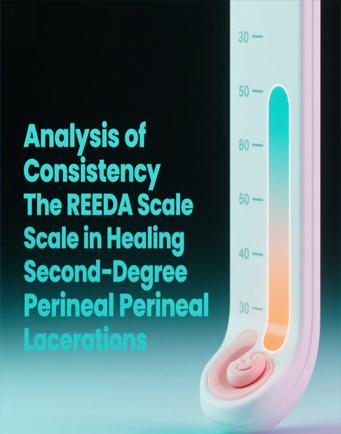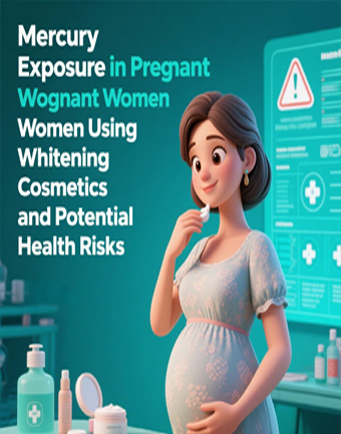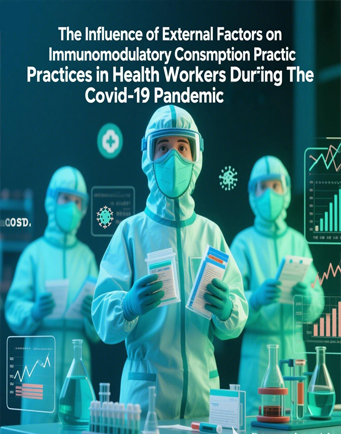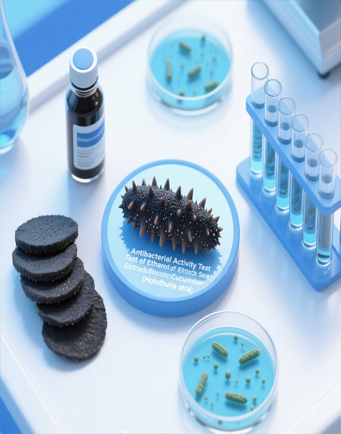The Effect of Contact Time Variations of Activated Carbon from Coconut Shell on the Peroxide Value in Used Cooking Oil

Downloads
Cooking oil is a commonly used food product in daily life, both in households and commercially, especially for frying purposes. The repeated use of cooking oil can lead to an increase in peroxide value, which may pose health risks. High peroxide values are carcinogenic and can trigger various health problems, such as elevated cholesterol levels and heart disease. One method to reduce peroxide value is by using activated carbon, such as activated carbon derived from coconut shells. This study aims to analyze the effect of contact time variations of activated carbon from coconut shells on the reduction of peroxide value in used cooking oil. The research design used was a quasi-experiment with an iodometric testing method. A total of 24 samples of used cooking oil were treated with activated carbon from coconut shells for different contact times: 20 minutes, 30 minutes, and 40 minutes. The peroxide value was then measured. The results showed that varying the contact time with activated carbon from coconut shells resulted in the following average peroxide values: 15.57 meq O2/kg, 7.57 meq O2/kg, 6.58 meq O2/kg, and 5.82 meq O2/kg. The percentage reduction in peroxide value was 0%, 51.41%, 57.06%, and 62.64%, respectively. In conclusion, the study found a significant effect of contact time variations of activated carbon from coconut shells on the reduction of peroxide value in used cooking oil, with a probability value of 0.000 < 0.05.
Anconi, A. C. S. A., Brito, N. C. S., & Nunes, C. A. (2022). Determination of peroxide value in edible oils based on Digital Image Colorimetry. Journal of Food Composition and Analysis, 113, 104724. https://doi.org/10.1016/j.jfca.2022.104724
Awogbemi, O., Onuh, E. I., & Inambao, F. L. (2019). Comparative study of properties and fatty acid composition of some neat vegetable oils and waste cooking oils. International Journal of Low-Carbon Technologies, 14(3), 417-425. https://doi.org/10.1093/ijlct/ctz038
Bhattacharya, S. (2022). Snack Foods: Processing and Technology. Academic Press.
Bow, Y., Effendi, S., Taqwa, A., Rinditya, G., Pratama, M. Y., & Rusdianasari, R. (2019). Analysis of Air Fuel Ratio on Combustion Flames of Mixture Waste Cooking Oil and Diesel using Preheating Method. In International Conference on Sustainable Agriculture, Food and Energy (SAFE). Chiang Mai Rajabhat University-THAILAND.
Dewi, P. S., & Ulfah, M. (2021). Quality Test of Palm Cooking Oil Used Repeatedly Based on Free Fatty Acid Content, Moisture Content, Peroxide Number. Journal of Science and Technology Research for Pharmacy, 1(1), 34-41. https://doi.org/10.15294/JSTRP.V1I1.44461
Emelia & Akmal, (2021). Analisis Konsumsi Makanan Jajanan Terhadap Pemenuhan Gizi Remaja. Journal of Nutrition and Culinary (JNC), 1(1). https://doi.org/10.24114/jnc.v1i1.20697
Erickson, M. D., Yevtushenko, D. P., & Lu, Z. X. (2023). Oxidation and thermal degradation of oil during frying: A review of natural antioxidant use. Food Reviews International, 39(7), 4665-4696. https://doi.org/10.1080/87559129.2022.2039689
Foo, W. H., Koay, S. S. N., Chia, S. R., Chia, W. Y., Tang, D. Y. Y., Nomanbhay, S., & Chew, K. W. (2022). Recent advances in the conversion of waste cooking oil into value-added products: A review. Fuel, 324, 124539. https://doi.org/10.1016/j.fuel.2022.124539
Gharby, S. (2022). Refining vegetable oils: Chemical and physical refining. The Scientific World Journal, 2022(1), 6627013. https://doi.org/10.1155/2022/6627013
Ghohestani, E., Tashkhourian, J., & Hemmateenejad, B. (2023). Colorimetric determination of peroxide value in vegetable oils using a paper based analytical device. Food Chemistry, 403, 134345. https://doi.org/10.1016/j.foodchem.2022.134345
Hanum, Y. (2016). Dampak bahaya makanan gorengan bagi jantung. Jurnal Keluarga Sehat Sejahtera, 14(28), 103-114. Retrieved from https://jurnal.unimed.ac.id/2012/index.php/jkss/ article/download/4700/4131
Kaniapan, S., Hassan, S., Ya, H., Patma Nesan, K., & Azeem, M. (2021). The utilisation of palm oil and oil palm residues and the related challenges as a sustainable alternative in biofuel, bioenergy, and transportation sector: A review. Sustainability, 13(6), 3110. https://doi.org/10.3390/su13063110
Machado, M., Rodriguez-Alcalá, L. M., Gomes, A. M., & Pintado, M. (2023). Vegetable oils oxidation: mechanisms, consequences and protective strategies. Food Reviews International, 39(7), 4180-4197. https://doi.org/10.1080/87559129.2022.2026378
Mannu, A., Garroni, S., Ibanez Porras, J., & Mele, A. (2020). Available technologies and materials for waste cooking oil recycling. Processes, 8(3), 366. https://doi.org/10.3390/pr8030366
Mariana, R. R., Susanti, E., Hidayati, L., & Wahab, R. A. (2020, April). Analysis of peroxide value, free fatty acid, and water content changes in used cooking oil from street vendors in Malang. In AIP Conference Proceedings, 2231, 040057. AIP Publishing. https://doi.org/10.1063/5.0002656
Mbwana, H. A., & Mwinuka, L. (2024). Food Consumption Patterns of Heterogeneous Adults from Non-Specific Locations in Three East African Cities: a Qualitative Comparative Study. African Journal of Food, Agriculture, Nutrition and Development, 24(9), 24432-24447. https://doi.org/ 10.18697/ajfand.134.24535
Menes, C. C., Japitana, M. A. F., Chua, J. G. D., Dico Jr, M. R., Parcon, A. M. D., & Makilan, R. E. (2019). Street Food: Stories and Insights on Production and Operations, Marketing Strategies, and Vending. Management, 1(1), 42-69.
Mishra, S., Firdaus, M. A., Patel, M., & Pandey, G. (2023). A study on the effect of repeated heating on the physicochemical and antioxidant properties of cooking oils used by fried food vendors of Lucknow city. Discover Food, 3(1), 7. https://doi.org/10.1007/s44187-023-00046-8
Paputungan, R., Nikmatin, S., Maddu, A., & Pari, G. (2018). Mikrostruktur Arang Aktif Batok Kelapa Untuk Pemurnian Minyak Goreng Habis Pakai. Jurnal Keteknikan Pertanian, 6(1), 69-74. https://doi.org/10.19028/jtep.06.1.69-74
Pellenz, L., de Oliveira, C. R. S., da Silva Júnior, A. H., da Silva, L. J. S., da Silva, L., de Souza, A. A. U., ... & da Silva, A. (2023). A comprehensive guide for characterization of adsorbent materials. Separation and Purification Technology, 305, 122435. https://doi.org/10.1016/j.seppur.2022.122435
Pourhakkak, P., Taghizadeh, A., Taghizadeh, M., Ghaedi, M., & Haghdoust, S. (2021). Fundamentals of adsorption technology. In Interface science and technology, 33, 1-70. Elsevier. https://doi.org/10.1016/B978-0-12-818805-7.00001-1
Rathi, B. S., & Kumar, P. S. (2021). Application of adsorption process for effective removal of emerging contaminants from water and wastewater. Environmental Pollution, 280, 116995. https://doi.org/10.1016/j.envpol.2021.116995
Roy, D., Boss, R., Saroj, S., Karandikar, B., Pradhan, M., & Pandey, H. (2021). Snack food consumption across the pune transect in India: a comparison of dietary behaviors based on consumer characteristics and locations. Nutrients, 13(12), 4325. https://doi.org/10.3390/nu13124325
Sugiyono. (2019). Metode Penelitian Kuantitatif Kualitatif dan R&D (Ke-2). Alfabeta.
Sulaiman, N. S., Sintang, M. D., Mantihal, S., Zaini, H. M., Munsu, E., Mamat, H., ... & Pindi, W. (2022). Balancing functional and health benefits of food products formulated with palm oil as oil sources. Heliyon, 8(10). https://doi.org/10.1016/j.heliyon.2022.e11041
Suzihaque, M. U. H., Alwi, H., Ibrahim, U. K., Abdullah, S., & Haron, N. (2022). Biodiesel production from waste cooking oil: A brief review. Materials Today: Proceedings, 63, S490-S495. https://doi.org/10.1016/j.matpr.2022.04.527
Upreti, Y. R., Bastien, S., Bjonness, B., & Devkota, B. (2020). Socio-Ecological factors associated with snacking behaviors of basic school students in Nepal. Current Research in Nutrition and Food Science Journal, 8(3), 774-784. https://dx.doi.org/10.12944/CRNFSJ.8.3.10
World Health Organization. (2019). WHO/FAO Inter-Regional meeting to promote healthy diets through the informal food sector in Asia: 20–22 August 2019, Bangkok, Thailand (No. SEA-NUT-201). World Health Organization. Regional Office for South-East Asia.
Zhang, N., Li, Y., Wen, S., Sun, Y., Chen, J., Gao, Y., ... & Yu, X. (2021). Analytical methods for determining the peroxide value of edible oils: A mini-review. Food Chemistry, 358, 129834. https://doi.org/10.1016/j.foodchem.2021.129834
Zhou, Y., Lu, J., Zhou, Y., & Liu, Y. (2019). Recent advances for dyes removal using novel adsorbents: a review. Environmental pollution, 252, 352-365. https://doi.org/10.1016/j.scitotenv.2018.07.279
Zunifer & Ayu, (2020). Ukuran Partikel dan Waktu Kontak Kabon Aktif dari Kulit Singkong Terhadap Mutu Minyak Jelantah. SAGU Journal. 19(2), 27-38. http://dx.doi.org/10.31258/sagu.v19i2.7896
Copyright (c) 2024 JURNAL INFO KESEHATAN

This work is licensed under a Creative Commons Attribution-NonCommercial-ShareAlike 4.0 International License.
Copyright notice
Ownership of copyright
The copyright in this website and the material on this website (including without limitation the text, computer code, artwork, photographs, images, music, audio material, video material and audio-visual material on this website) is owned by JURNAL INFO KESEHATAN and its licensors.
Copyright license
JURNAL INFO KESEHATAN grants to you a worldwide non-exclusive royalty-free revocable license to:
- view this website and the material on this website on a computer or mobile device via a web browser;
- copy and store this website and the material on this website in your web browser cache memory; and
- print pages from this website for your use.
- All articles published by JURNAL INFO KESEHATAN are licensed under the Creative Commons Attribution 4.0 International License. This permits anyone to copy, redistribute, remix, transmit and adapt the work provided the original work and source is appropriately cited.
JURNAL INFO KESEHATAN does not grant you any other rights in relation to this website or the material on this website. In other words, all other rights are reserved.
For the avoidance of doubt, you must not adapt, edit, change, transform, publish, republish, distribute, redistribute, broadcast, rebroadcast or show or play in public this website or the material on this website (in any form or media) without appropriately and conspicuously citing the original work and source or JURNAL INFO KESEHATAN prior written permission.
Permissions
You may request permission to use the copyright materials on this website by writing to jurnalinfokesehatan@gmail.com.
Enforcement of copyright
JURNAL INFO KESEHATAN takes the protection of its copyright very seriously.
If JURNAL INFO KESEHATAN discovers that you have used its copyright materials in contravention of the license above, JURNAL INFO KESEHATAN may bring legal proceedings against you seeking monetary damages and an injunction to stop you using those materials. You could also be ordered to pay legal costs.
If you become aware of any use of JURNAL INFO KESEHATAN copyright materials that contravenes or may contravene the license above, please report this by email to jurnalinfokesehatan@gmail.com
Infringing material
If you become aware of any material on the website that you believe infringes your or any other person's copyright, please report this by email to jurnalinfokesehatan@gmail.com.





































